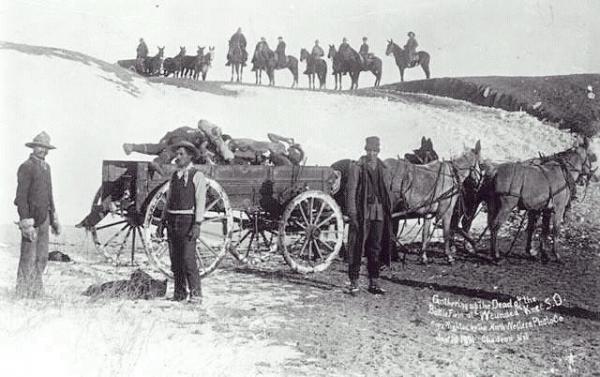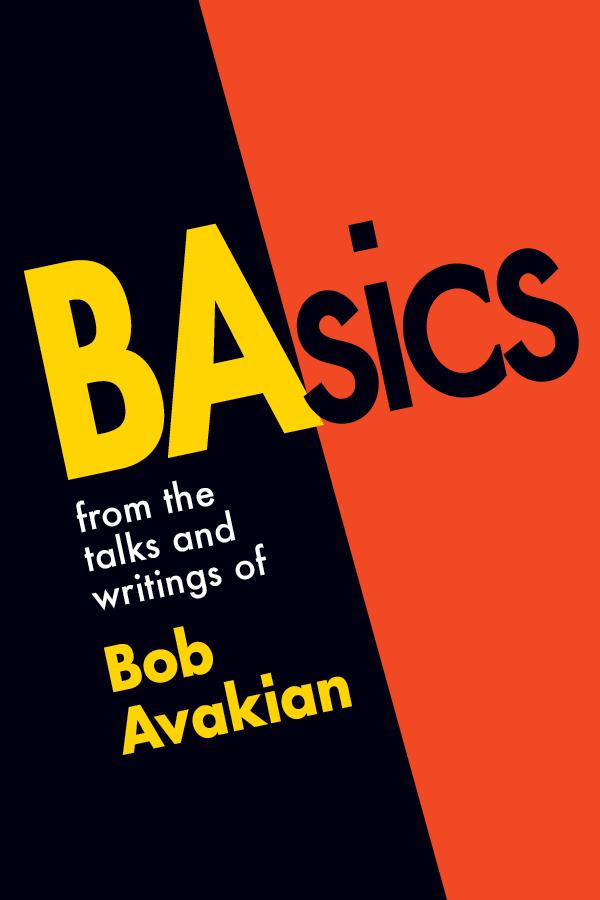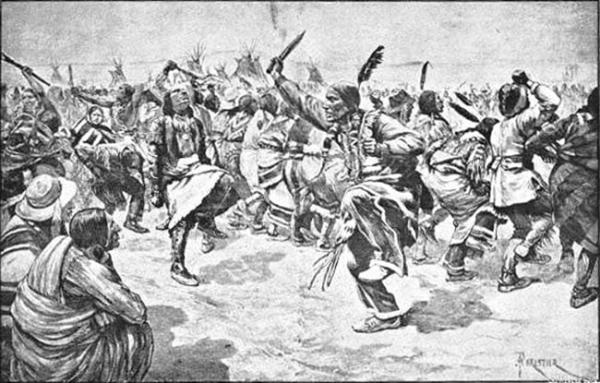Bob Avakian has written that one of three things that has “to happen in order for there to be real and lasting change for the better: People have to fully confront the actual history of this country and its role in the world up to today, and the terrible consequences of this.” (See “3 Things that have to happen in order for there to be real and lasting change for the better.”)
In that light, and in that spirit, “American Crime” is a regular feature of revcom.us. Each installment focuses on one of the 100 worst crimes committed by the U.S. rulers—out of countless bloody crimes they have carried out against people around the world, from the founding of the U.S. to the present day.
See all the articles in this series.


Victims of the 1890 massacre at Wounded Knee, where the U.S. Seventh Cavalry killed as many as 300 Lakota Indians, including children. Photo: Library of Congress
The Crime:
On December 29, 1890, U.S. government soldiers massacred nearly 300 of the 350 Lakota men, women, and children on the Pine Ridge Indian Reservation in South Dakota. The massacre took place near Wounded Knee Creek. Some of the women murdered were already widows whose husbands had previously been killed by U.S. troops. The Lakota Chief Spotted Elk (Big Foot), who was dying of pneumonia, was among those massacred.
The Lakota had been chased down by a detachment of the U.S. 7th Cavalry under the command of Major Samuel Whiteside. They were later joined by additional troops of the 7th Cavalry under Colonel James W. Forsyth. The U.S. troops, now numbering 500, surrounded the camp and positioned four Hotchkiss guns nearby so no one could escape. (Hotchkiss guns were lethal, firing shells that exploded on contact, showering the enemy with jagged shell fragments.) The Lakota feared that there would be revenge in the hearts of the 7th Cavalry. This was the unit that had been defeated at the Little Big Horn when under the command of General George Armstrong Custer.
On the morning of December 29, the Lakota men were separated from the women and children, and were ordered to disarm. Unsatisfied with the number of rifles that were turned in, Colonel Forsyth ordered that all lodges and men be searched. In the course of the search, a scuffle broke out between the soldiers and one of the Lakota, a deaf man named Black Coyote (Black Fox), who had spent a lot of money on his rifle. In the course of the struggle, a shot rang out. Immediately, the soldiers opened fire on the whole encampment.
A Lakota survivor, American Horse, described the massacre:
When the firing began, of course the people who were standing immediately around the young man who fired the first shot were killed right together, and then they [the U.S. Cavalry] turned their guns, Hotchkiss guns, etc., upon the women who were in the lodges standing there under a flag of truce. ...
There was a woman with an infant in her arms who was killed as she almost touched the flag of truce.... Right near the flag of truce a mother was shot down with her infant; the child not knowing that its mother was dead was still nursing, and that especially was a very sad sight. The women as they were fleeing with their babes were killed together, shot right through, and the women who were very heavy with child were also killed. ... [A]fter most all of them had been killed a cry was made that all those who were not killed [or] wounded should come forth and they would be safe. Little boys who were not wounded came out of their places of refuge, and as soon as they came in sight a number of soldiers surrounded them and butchered them there.
“The soldiers lost 25 dead and 39 wounded, most of them killed by their own bullets or shrapnel,” Dee Brown wrote in Bury My Heart at Wounded Knee. “A detail of soldiers went over the Wounded Knee battlefield, gathering up Indians still alive and loading them in wagons. As it was apparent by the end of the day that a blizzard was approaching, the dead Indians were left where they had fallen.”


Spotted Elk lying dead at Wounded Knee
After a few days, and a freezing blizzard, the dead became frozen in grotesque shapes. Then these Lakota were buried in mass graves. At least one was buried alive.


The dead being collected after Wounded Knee massacre
President Benjamin Harrison awarded 20 soldiers Medals of Honor, the U.S.’s highest military distinction, to the butchers of the 7th Cavalry. This was the most ever awarded for a single battle in American history, before or since. Despite protests and demands, those medals have never been rescinded.
The Criminals:
U.S. President Benjamin Harrison: In late November 1890, President Benjamin Harrison ordered federal troops into South Dakota in the largest military mobilization since the Civil War. Considering the Lakota as “naturally warlike and turbulent,” he “placed at the disposal of General Miles, commanding the Division of the Missouri, all such forces as were thought by him to be required.”
The War Department of the U.S.
General Nelson A. Miles: Miles played a leading role in nearly all of the U.S. Army’s campaigns against the American Indian tribes of the Great Plains. During 1874-1875, he led the attacks on the Kiowa, Comanche, and the Southern Cheyenne. During 1876-1877, he forced the Lakota and their allies onto reservations.
In 1890, Miles aimed to crush any further resistance by the Lakota on their reservations. Miles and others in the U.S. government worried that this resistance was taking the form of the “Ghost Dance,” a group spiritual dance taken up by many Lakota in hopes it would reunite them with the spirits of their dead; bring the spirits of the dead to fight on their behalf; make the white colonists leave; and bring peace, prosperity, and unity to Indian peoples throughout the region. While he did not directly order the massacre, Miles’ overall campaign to subdue the Lakota led to the slaughter at Wounded Knee.
Major Samuel Whiteside and Colonel James W. Forsyth: Carried out the bloodthirsty massacre at Wounded Knee.


BAsics from the talks and writings of Bob Avakian
If you can conceive of a world without America—without everything America stands for and everything it does in the world—then you’ve already taken great strides and begun to get at least a glimpse of a whole new world. If you can envision a world without any imperialism, exploitation, oppression—and the whole philosophy that rationalizes it—a world without division into classes or even different nations, and all the narrow-minded, selfish, outmoded ideas that uphold this; if you can envision all this, then you have the basis for proletarian internationalism. And once you have raised your sights to all this, how could you not feel compelled to take an active part in the world historic struggle to realize it; why would you want to lower your sights to anything less?
—Bob Avakian, BAsics 1:31
The Alibi: The U.S. government had long justified its murderous plans to expand across the continent, and brutally force Native Americans, including the Lakota, off their traditional lands and onto reservations with the doctrine of “Manifest Destiny.” This was the claim that God—or “Providence”—had ordained the territorial expansion of the United States, and that white people, Western Christianity, and civilization were inherently superior to the “heathen” Native Americans.
In 1890, the immediate excuse given for the campaign against the Lakota was that the rise and spread of the Ghost Dance would lead to a violent outbreak by the Lakota. Journalists who accompanied the federal troops sent to South Dakota wrote inflammatory articles to spread fear among the whites who had settled on Lakota land, which led to hysteria by 1890.


Depiction of a Ghost Dance.
The Actual Motive:
In reality, Manifest Destiny was an expression of and justification for the compulsion of the U.S. rulers to expand their power and system of capitalism and white supremacy across the entire Continent.
In reality, the Ghost Dance was a pacifist movement. A former agent, Valentine McGillycuddy, ridiculed the panic that overcame the agencies, saying: “If the Seventh-Day Adventists prepare the ascension robes for the Second Coming of the Savior, the United States Army is not put in motion to prevent them. Why should not the Indians have the same privilege? If the troops remain, trouble is sure to come.”
In 1851, the U.S. government had promised the Lakota an enormous extent of land in the north-central U.S. in the Fort Laramie Treaty. The government broke that treaty, and signed a new one for a much smaller amount of land in 1868. But three years later it passed the Indian Appropriation Act, which effectively turned reservations into prisoner of war camps whose inhabitants had no rights and could not leave. When gold and other valuable resources were discovered in the Black Hills, the government divided up the land, between Native Americans who hated the concept of private ownership of land and white settlers to whom private property was everything. Native Americans were left with land nobody else wanted.
The massacre at Wounded Knee was meant to be the final end to any kind of resistance by Native peoples—the last episode in the bloody history of the U.S government’s genocide of the Lakota. The U.S. government wanted to consolidate its rule over the original inhabitants of North America, further opening up the West to white settlers, and saw any kind of resistance among the Lakota as a threat to its ambitions.
Sources
“Heartless at Wounded Knee,” from A World to Win News Service, Revolution, April 18, 2013
Dee Brown, Bury My Heart at Wounded Knee: An Indian History of the American West, Holt, Rinehart & Winston, 1970
Lakota Accounts of the Massacre at Wounded Knee, PBS Archives of the West
Shelley Fisher Fishkin, “Remembering the Wounded Knee Massacre,” Utne Reader, June 2016
“WOUNDED KNEE MASSACRE,” Encyclopedia of the Great Plains
Benjamin Harrison, President of the United States, “Third Annual Message,” December 9, 1891
Jeffrey Ostler, “Conquest and the State: Why the United States Employed Massive Military Force to Suppress the Lakota Ghost Dance,” Pacific Historical Review, May 1996
Written Testimony of Mario Gonzalez from the September 25, 1990 Senate Hearing
“Ghost Dance,” hanksville.org
Alysa Landry, “Benjamin Harrison: Busted Up Sioux Nation, No Remorse for Wounded Knee,” Indian Country Today Media Network, June 7, 2016
“President Benjamin Harrison and Indian Policy,” Native American Netroots, March 18, 2014
James Mooney, The Ghost Dance Religion and Wounded Knee, Dover Publications, 1896
“Ghost Dance,” New World Encyclopedia
Hari Jagannathan Balasubramanian, “America’s Westward Expansion, the Ghost Dance and Wounded Knee,” Thirty letters in my name, November 4, 2007
